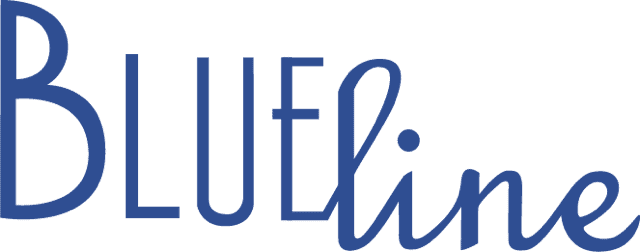During a recent client engagement, I was reminded once again of how critical effective coaching is to success in the workplace. While conducting a gap analysis to identify failure points in a new sales process, one refrain was stated loudly and consistently: “our coaching on the new process is inconsistent, at best.” Unfortunately, this is a theme I’ve heard all too often in my career.
Numerous studies have shown the significant impact that effective coaching can have on performance. One frequently cited study by Olivero and Bane, showed that after training alone, the average increase in productivity was 22.4%. When training was reinforced with coaching, the average increase in productivity was 88%. And a 2001 case study by MetrixGlobal found that “coaching produced a 529% return on investment and significant intangible benefits to the business. And if the financial benefits from employee retention were included, it boosted the overall ROI to 788%.
Given the pace of change in today’s working environment, it’s little wonder that instilling an organizational coaching culture has become such a hot topic. When done right, coaching can be a key driver of organizational success. To be agile and adapt quickly, organizations should foster an environment where managers and informal leaders (such as project managers) are encouraged to provide regular coaching and feedback.
Why is coaching so underutilized in so many organizations?
There are a number of answers to that question, including: increasing spans of control limiting coaching opportunities, competing priorities, the dynamics of the hybrid workplace, and a lack of focus on employee development within the culture. The one that I want to address here is a lack of comfort with the skills required to coach effectively. While many managers are comfortable with setting goals, allocating resources and developing or evaluating reports, they are often hesitant to engage in a performance coaching dialogue.
Most coaching falls into one of three categories: task, performance, and career coaching. Day-to-day coaching focuses on task and job performance, and career coaching builds on task and job performance over time. There are some subtle and some not-so-subtle differences in the skills/behaviors required, and organizational leaders should be comfortable doing all three.
So, how can organizations equip their leaders with these valuable coaching skills and cultivate a culture that addresses these various coaching needs? Before we answer that question, let’s look at the different types of coaching in more detail.
What is task-based coaching?
Task-based coaching is a simple concept and something you’re probably used to doing quite regularly: delivering coaching and guidance related to a specific task assigned to a mentee or a direct report. The learning task is specific to a single concept, which could take the form of coaching an employee who is new to a task or whose motivation has waned. Leveraging laser-focused, task-based coaching that considers the skill and motivation of the coachee delivers immediate real-world impact.
Task-based coaching also serves as a development vehicle when:
- No formal training exists (or it’s not available in a timely manner)
- The specific skill can’t be learned effectively through formal learning
- There is little defined formal or informal learning on the topic
Examples of task-based coaching include helping a direct report to use a piece of software more efficiently, improve project management capabilities, or become more proficient in a certain phase of a complex process. Generally, the leader is already proficient in the task and can offer insights based on personal experience (or can assign a mentor who meets those criteria). No matter the task, it’s important to ensure that the coachee knows that the coaching is coming from a positive place.
What is performance coaching?
Performance coaching pulls back a bit from specific task-based coaching. It’s the process of optimizing employee performance by providing both corrective and reinforcing feedback. Although coaching for job performance uses many of the same principles as coaching to a task, it is more complex because it can involve the integration of the entire set of tasks and processes that comprise a job function.
Today’s leaders need to be able to deliver timely and effective performance coaching to hold people accountable to goals and behavior on the job. Individualized attention and tailored development planning is one of the key advantages of coaching over other development methods, such as classroom workshops, webinars or cultivated digital curriculums—those formal interventions provide generalized information that isn’t necessarily relevant to the individual’s coaching needs.
Examples of performance coaching areas at work:
- Business acumen
- Leadership
- Sales
- Customer service
- Time management
- Communication
- Conflict resolution
- Goal setting
- Problem-solving
- Stress management
- Team-building
- Public speaking
- Networking
Some benefits of performance coaching:
- Provides an objective view that helps employees identify where they can improve
- Helps employees to see the bigger picture and how their individual goals fit into the organization’s wider objectives, helping them feel more invested in their work
- Increases engagement and strengthens retention rates
- Employees who feel supported in their work are more likely to be productive and produce high-quality work
- Everyone wins when there are opportunities to discuss work, reflect on progress, and identify areas for improvement
What is career coaching?
One of the primary objectives of coaching for career development is to prepare employees for their next role or roles, which could also include preparing them for a more senior level or job ladder grade within the same overall role. An example would be moving from a Junior Software Engineer role to an Intermediate Software Engineer, necessitating a change in day-to-day functional authorities and accountabilities.
While career coaching has often been delegated to HR or a career counselor, this is a missed opportunity. Strong leaders also have a role to play in empowering individuals to pursue career goals. Although leaders don’t own other people’s careers, they can be a powerful ally and partner in helping employees figure out what’s next for them and supporting them in developing new skills. And in today’s world of quiet quitting, career development conversations can play an important role in retaining key talent.
An adept leader asks powerful questions to tap into an individual’s vision, wisdom, and directed action in service of their self-identified agenda. When employees are actively involved in and take ownership of their development, they are more likely to experience individual growth and positively impact the organization. And when leaders are able to help align an employee’s talents and passions with the organization’s needs, the result is an engaged employee who is more motivated and able to meet or exceed business performance expectations aligned to business strategy.
What makes a great coach?
Managers and leaders who make good coaches are invaluable assets to any organization looking to improve employee performance. No matter the type of coaching, several key skills make a great coach and leader, including the ability to:
- Develop relationships and build trust and rapport with their employees
- Model good listening and communication skills
- Help their coachees work through difficult situations
- Demonstrate an enthusiastic, positive, and supportive attitude
- Show empathy and take a more compassionate approach to interpersonal situations
- Assess the ability and motivation of the employee and adapt their coaching style accordingly
The good news is that these coaching skills can be, well, coached!
A coaching curriculum that delivers on three dimensions: career, task, and performance
While traditional classes devoted to coaching provide the context and process for coaching effectively, they fail to develop mastery. Most training sessions can offer only two or three opportunities to role-play a coaching conversation. While this may be sufficient to reinforce the key concepts, it falls far short of developing unconscious competence. Role-playing rarely provides the variety of emotional responses one is likely to encounter during actual coaching conversations, either. And unless there is an immediate opportunity or need to engage in coaching after the training, the limited proficiency that is developed will have faded before the leader can apply the skills in a critical coaching situation.
Blueline can help your organization build leadership competence by immersing your learners in engaging simulations. Using specific scenarios in context can help your employees develop a common core set of leadership skills, including coaching for maximum performance, career coaching and counseling, and task-based coaching.
Although the content and competencies may not be new, our delivery is what sets the learning experience apart. Our synchronous, team-driven discovery learning method promotes maximum engagement and delivers the highest levels of retention and pull-through—whether remotely or on-site. Reach out to the team to learn more about building a coaching culture and competencies at your organization.


